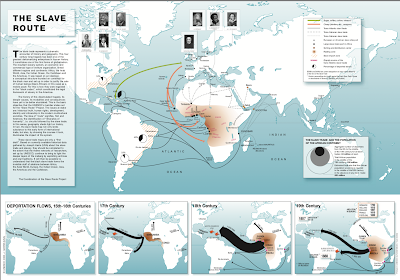For a final post of my Spring visit to the
La Jolla Map & Atlas Museum I want to spotlight a few maps that are interesting to me for various personal reasons.
This map by William Faden shows the movements of George Washington's troops against the King's army in New Jersey in 1776 and 1777. Faden's
1777 map of Philadelphia hangs on my wall and part of it appears on the header image at the top. The New Jersey map has lots of bits of historical information but this less important detail in the southwest corner is what interests me the most.
My childhood home is at the bottom of the map, just a little south and east of Middletown (now Langhorne, but the surrounding area is still Middletown Township). We would often take the drive to Newtown to get ice cream and visit the stores. It was a nice country drive to a nice little town. Newtown is still a quaint olde towne but is now surrounded by a partial beltway and a sea of ugly (IMHO) housing developments. I like seeing this view of Pennsylvania before runaway development.
Woodblock map of Edo (Tokyo) ca 1840 from the Shogun period.
I have always been fascinated with Japan and especially Tokyo. I also love woodblock maps and all the tiny details found within them.
There is a
detail page on this map on the museum's web site.
I took this photo and then rotated the map, out of habit of wanting to see north up. The map is actually reverse "oriented" with west at the top. My rotation was a kind of accidental mistake but I've left it this way because it fits the blog dimensions better. Here is the description from the museum's page.
"beautiful woodblock map of Tokyo from the golden age of Japanese
woodblock map printing. Combining the elements of traditional Japanese
map-making: rice paper, woodblock printing, delicate application of
colour, the inclusion of topographical views into the map proper, and
all text seems to radiate from the centre of the map; with a more modern
western-influenced directional orientation with north to the right of
the image. "
Here is a bird's-eye view of Avalon on Santa Catalina Island in southern California. I've never been there and I don't know exactly why this map speaks to me. It just looks like a warm, welcoming town nestled in among the mountains - probably with crazy high real estate prices.
Downtown detail.
The map is surrounded by images both real and fanciful of seals, buffalo, mermaids and people having all kinds of recreational fun. Here is one showing the road signs.
This last item is of interest due to its uniqueness. It is a display case used by Folsom Brothers to sell real estate in San Diego.
The case folds closed like a suitcase to carry around. The map is a relief map showing the topography in detail.
Here is the handle just west of Point Loma






























